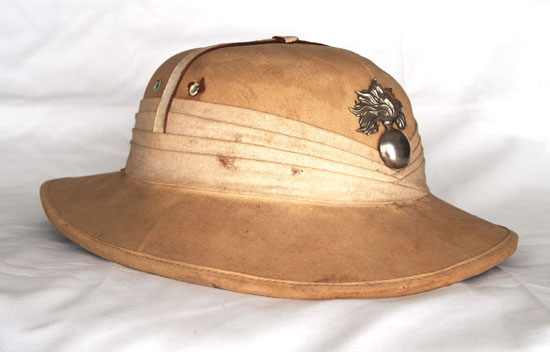
One great irony of the era of imperialism and European colonial empires is that the French reached their colonial zenith as a republic. In fact an overseas empire was seen as a way of restoring the prestige of France following the humiliating defeat in the Franco-Prussian War in 1871. As we’ve noted in past articles the French utilized their own style of “colonial” pattern helmet.
The latter version, the Model 1886, was used throughout the First World War and even into the 1920s. By 1931 it was largely anachronistic – as other nations including Great Britain, Germany, Belgium and even Italy had adopted helmets with wider brims that offered greater protection from the rays of the sun. It has been noted that the Wolseley pattern, which was of British design, was copied and used by Belgium, Portugal, Spain and even Greece. Apparently the French too considered this design as noted by a largely overlooked sun helmet.
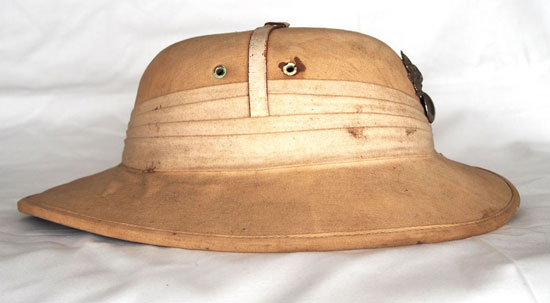
The French private purchase sun helmet – made of cork it could be seen to be based on the Wolseley and likely evolved into the Model 1931 sun helmet. This helmet features a similar placement of the vent holes as the later M31 helmets. (Collection of the Author)
This particular pattern has no known model number. It loosely resembles the Wolseley and various Indian pattern helmets. Photographic evidence suggests it was widely used in France’s African colonies and Middle Eastern mandates after World War I. It is likely a private purchase item, and was likely adopted by higher ranking officers – although even in tropical conditions officers tended to wear the famous kepi in the field – and colonial officials.
This example is made of cork and pressed fiber. It is covered in khaki drill cloth and wrapped with a cotton puggaree. It features the standard “flaming bomb” insignia that was used by the French Foreign Legion and French colonial militias. This example has a leather liner band with a silk lining, suggesting it was a quality helmet.
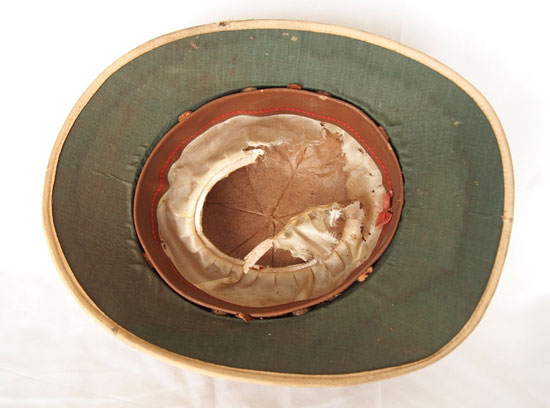
The interior of this French private purchase helmet shows the quality lining, and the exposed fiber that is under the cork shell of the helmet (Author’s Collection)
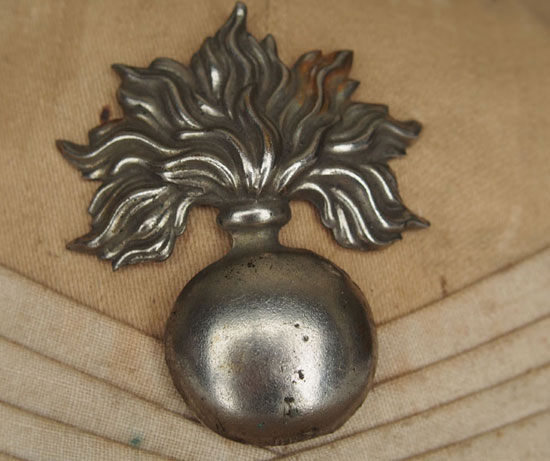
The flaming bomb insignia that was common on French kepis, helmets and other headgear (Author’s Collection)
This helmet is notable because the French M31 in its various forms lacks a puggaree, but at the same time has the same basic profile so it is possible that the M31 evolved from this pattern – notably in the two grommet/vent holes on each side.
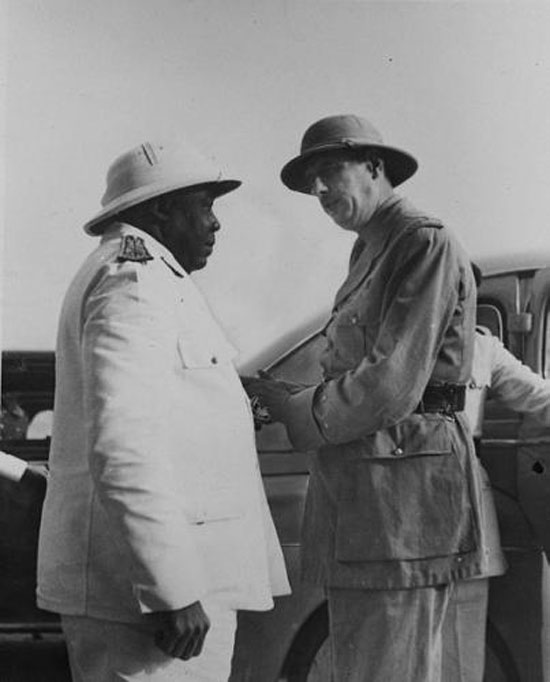
Adolphe-Félix-Sylvestre Eboué meeting with De Galle in 1940. Note that Eboué is wearing a helmet quite similar in shape and design as the one in the author’s collection.
As noted by a 1940 dated photo Adolphe-Félix-Sylvestre Eboué, in which the French Colonial Administrator met with General Charles De Galle, this pattern helmet was used by Free French Officials. For the record, Eboué served as general secretary in Martinique, French West Indies (1932-1934), and two years in the same post in Mali (then Sudan), French West Africa (1934-1936). From 1936 to 1938 he was the colonial governor of Guadeloupe, French West Indies, the first person of African ancestry to hold the post in the French Colonial Empire. He served as governor of Chad in 1938 and rallied the Free French Forces (FFL) in July 1940, and was later appointed to general governor of all French Equatorial Africa. Several photos show him wearing a similar pattern helmet.
